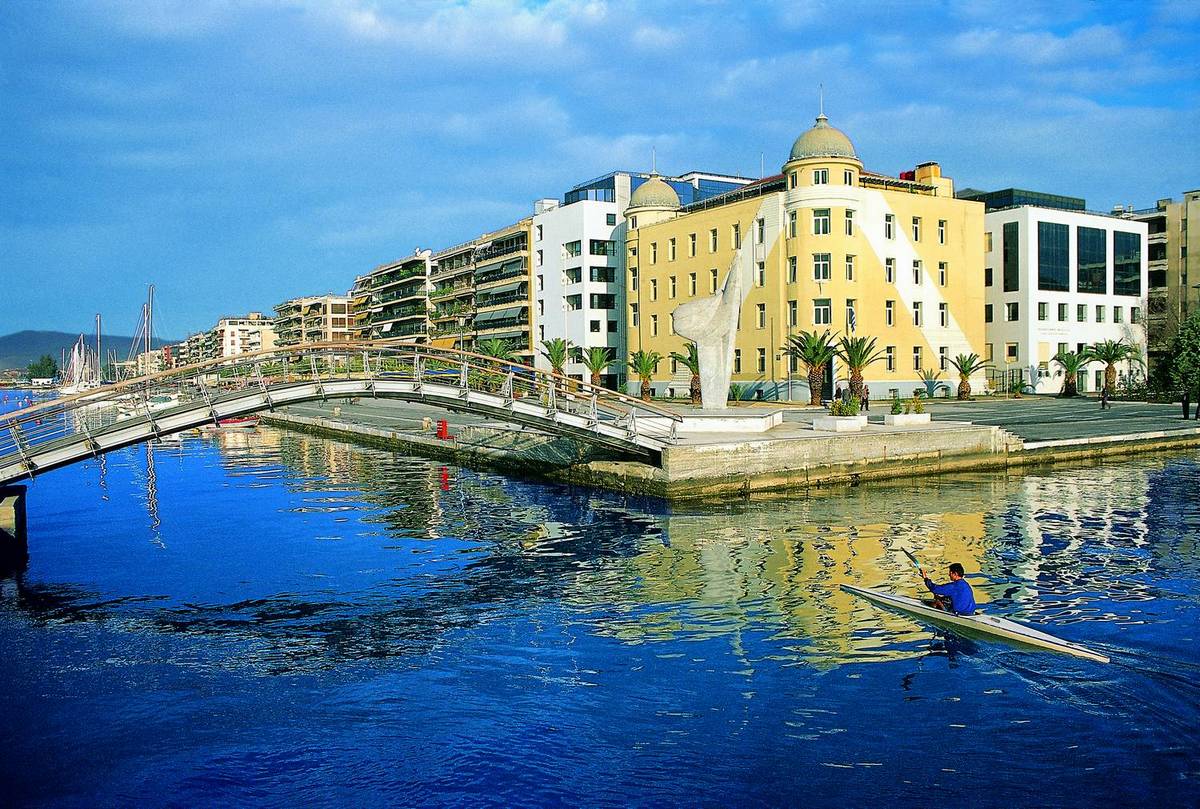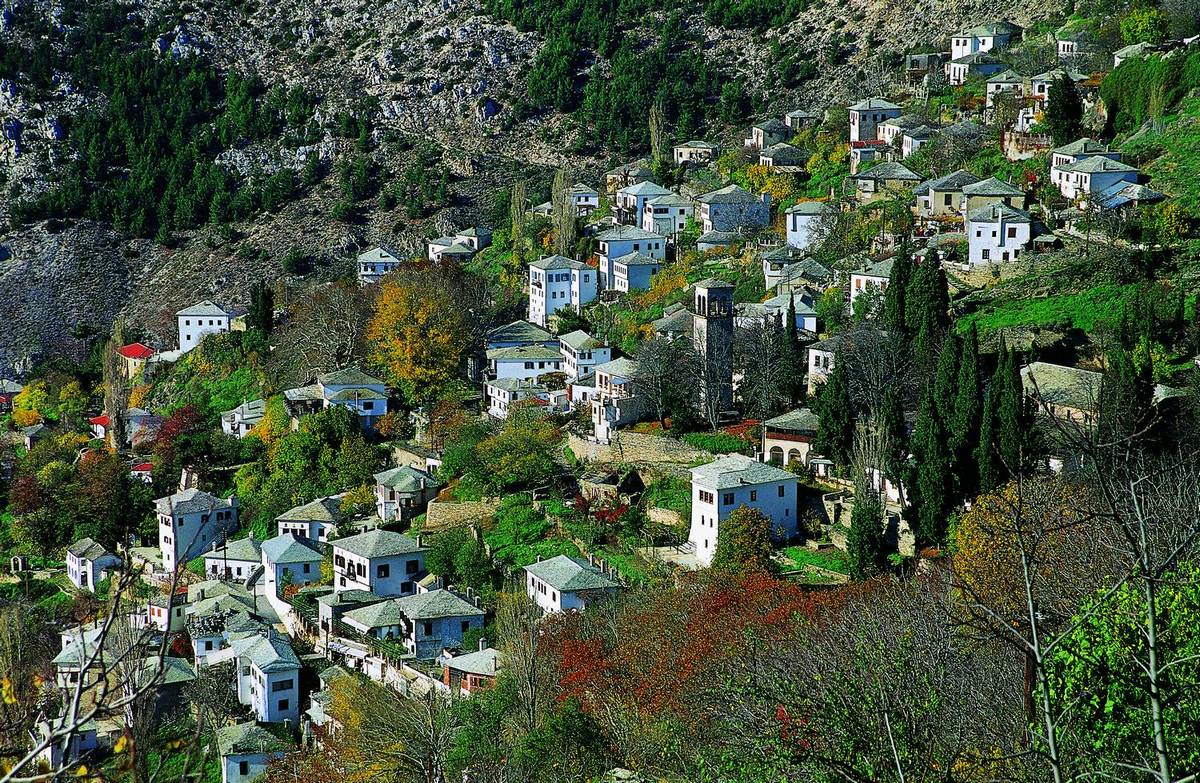 Mount Pelion was in Greek mythology the land of the Centaurs, mythological creatures with the upper body of a human and the lower body of a horse. The fairest of them, Chiron trained the sons of the gods and heroes in a cave below the summit of Pelion. Asclepius and Achilles, the hero of the Trojan War, were among his most famous students.
Mount Pelion was in Greek mythology the land of the Centaurs, mythological creatures with the upper body of a human and the lower body of a horse. The fairest of them, Chiron trained the sons of the gods and heroes in a cave below the summit of Pelion. Asclepius and Achilles, the hero of the Trojan War, were among his most famous students.
Volos is one of the largest Greek cities and one of the major ports of the country. It is located in the center of Greece (320 km. north of Athens and 219 km. south of Thessaloniki) and built in the cove of Pagasitikos bay at the foot of Mount Pelion. It combines the charm of the sea with the mysterious beauty of the Centaurs Mountain. The beautiful city is connected with the famous Argonauts, one of the major epics of Greek mythological cycle.
The wealth of the region and its great history is reflected in every part of the city. There are a many mansions, public palaces, museums, industrial facilities of the 20th century and historical churches which make the visit in Volos really enjoyable.
The visitor can wander around the beautiful seafront with picturesque shops, the famous “tsipouro” places, where you can enjoy traditional tsipouro and special seafood. The pedestrian seaside avenue Argonauts and the passenger port in the western end, with stunning views to the open sea, is the most popular meeting point and promenade for residents and visitors of the city.
Volos has many attractions to satisfy even the most demanding visitor. The great industrial buildings, vestiges of the boom of Volos in the first half of the 20th century will certainly win your attention. The large district of Nea Ionia, built by the refugee population from Asia Minor, has formed the physiognomy of the city. Urban mansions in the center, the port and the railway station, and the working-class districts on the outskirts form a very charming residential context.
The central streets Iasonos, Demetriados and Ermou create the "heart" of the historic center, where most of the commercial activity and nightlife take place. Students of the Thessaly University keep the city alive.
It is also worth visiting:

- The Argonauts boulevard, where you can see "Argo" (at the port), the work of sculptor Nikolas and "trademark" of the city, and the hull of modern Argo (made in the image of the ancient), an important shipbuilding achievement.
- The beautiful Papastratos building (1926) with its special architecture, which currently hosts services and faculties of the University of Thessaly.
- The district "Palia" (old city) - estimated to have been continuously inhabited from 3000 BC, and according to one version identified as ancient Iolkos - to admire the Roman baths, the ruins of the castle (mid 6th century. AD) the Ottoman gunpowder (1600), the square of St. Theodore and the former Tsalapatas factory (1925), which today houses the Brickworks Museum.
- "Rigas Feraios" Square - the largest city - with its impressive City Hall and the building of the Municipal Theatre with the greatest scene in the Balkans.
- The large park of Saint Constantine the church (work of the important architect Zachos, 1936) and Anavros park with outdoor sculpture.
- The cinema Achillion (1925) designed by the architect K. Argyris.
- Goritsa hill with the church of Panagia (1892) at the top for a panoramic view of the city and the Virgin of Hole, built in a cave by the sea.
- In a close distance in the west of the city there are the archaeological sites of Sesklo (the settlement dates back to 6000 BC and is the oldest in Europe) and Dimini, which is the most famous prehistoric settlement of Greece and the most important of the younger Neolithic Period.
- To the north and east, there is the imposing mountain of Pelion, the mythical mountain of legends and Centaurs. On the mountain, there are dozens of famous traditional villages built with the unique architecture of Pelion (most of the 15th-16th c.). A modern ski resort is situated near the village of Hania.
- The steam train of Pelion, "Moutzouris-Smudgy" (works, almost continuously, from 1895 and connects Lehonia village, near the sea, the village of Milies at an altitude of 400 m.) makes an unforgettable journey.
During the summer months, you can enjoy a lot of beautiful beaches - many of which have been awarded Blue Flags – in the Pagasetic Gulf or in the Aegean Sea, and you can have visit Skiathos, Skopelos and Alonissos for a day-long getaway.
https://tourismacademy.eu/en/about-us/region-en#sigProId3ade8ecfa8








